Emilia Romagna has always been a land of passage. Due to its central position it has always been an obligatory stop for travelers, merchants and pilgrims traveling across Europe and the Mediterranean. Moreover, because of its ancient catholic tradition, Emilia Romagna is run through by a great number of streets that once ran between abbeys, cathedrals and ancient places of worship.

Today, all these routes are paths on a Route Planner that leads to the soul of the territory, destinations for naturalistic and religious tourism where art, sustainability and tradition of the region are the focal point.
The Route Planner Cammini Emilia-Romagna offers the chance to travel 15 of these ancient routes, characterized by a strong spiritual, historical and naturalistic value. These Sloways are all mapped and marked with specific directions:
the Francigena Way, recognized by the European Council as a cultural itinerary; the Romea Germanica Way, the Romea Nonantolana and Romea Longobarda Way, ancient European pilgrimage routes to Rome; the Abbots Way, which retraces the paths followed by the Abbots to cross the Apennines; St. Anthony’s Walk, the Assisi Way, the St. Vicinius Way, Saint Francis’s Walk, linked to meaningful places in the life of St. Francis and St. Anthony; the Way of the Gods, which connects Bologna to Florence; the Matilda’s Way that connects the Reggio Apennines to Tuscany; the Piccola Cassia Way, one of the many paths that led to Rome, joining the Francigena Way; the Linari Way, in the Parma area; the Dante’s Walk, which connects Ravenna to Florence and the Viae Misericordiae, which is a great circular route to discover the naturalistic beauty of Emilia-Romagna.
The Route Planner also includes two other itineraries that have not much to do with catholic tradition, but are a must for all lovers of nature walks.
They are the Wool and Silk Way, which is an itinerary that traces the ancient trade route between Bologna and Florence, and the Alta Via, which is a long multi-day itinerary that runs along the mountain ridge that divides the regions of Liguria, Tuscany, Emilia-Romagna, and Marche.
Abbots Way
Stages in Emilia-Romagna: 6
Length in Emilia-Romagna: 127 Km
Opened by the monks of Bobbio who traveled it as a safe route between the cities of Pavia and Rome; the Abbots Way was closely connected with the monasteries of Gravago, Corte Torresana and San Giovanni in Pontremoli, and allowed complete control of both travellers and caravans to and from Rome across the northern Apennines. The route was also used by Irish pilgrims who on their way to Rome included a stop in Bobbio to pray at the tomb of St. Columbanus, the Irish abbot who founded the local abbey.
Route Planner
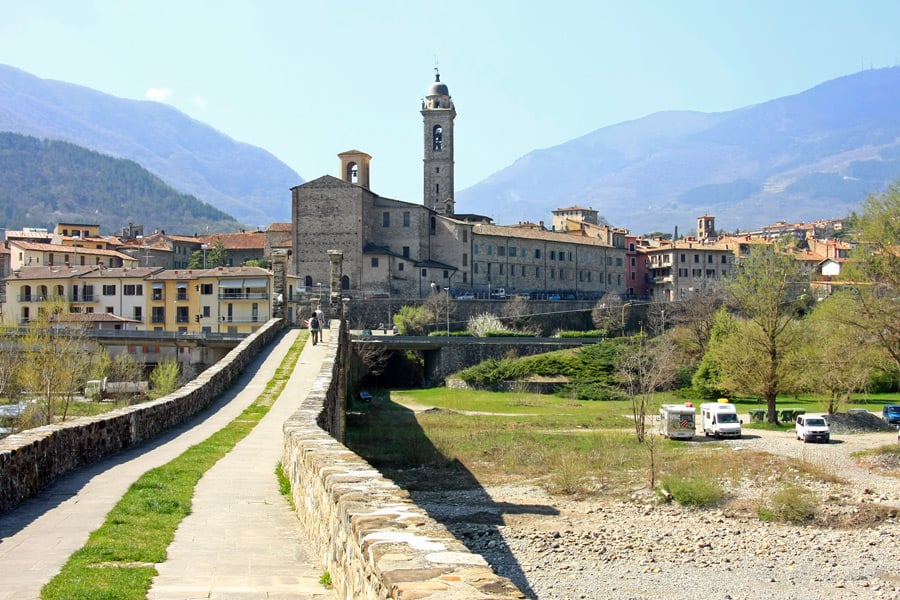
Francigena Way
Stages in Emilia-Romagna: 6
Length in Emilia-Romagna: 143 Km
The Francigena Way is a long European itinerary that starts in Canterbury and arrives at the tomb of St Peter in Rome, crossing four countries and thirteen European regions.
It originated as a detailed travel report in the 10th century A.D. written by Bishop Sigeric and, like all great communication routes, it has seen a constant flow of pilgrims over the centuries, making it both a privileged place of communication between the different European cultures and the cultural, artistic and economic forge of modern Europe.
In the Emilia-Romagna stretch, the Via Francigena passes through some villages of great historical and spiritual value, such as Berceto.
Route Planner
Linari Way
Stages in Emilia-Romagna: 7
Length in Emilia-Romagna: 110 Km
The Linari Way was originally founded as a safe detour from the Francigena Way through the Lagastrello Pass and took its name from the Abbey of the same name located on the ridge between Tuscany and Emilia Romagna.
Route Planner
Matilda's Way
Stages in Emilia-Romagna: 9
Length in Emilia-Romagna: 140 Km
The Matilda’s Way retraces the ancient itineraries that crossed Northern Italy within the ancient kingdom of the Countess Matilde di Canossa. In these lands one can still read the signs left by Matilda and her ancestors, by Saint Anselm of Lucca, an itinerant bishop who moved from Lucca to Reggio Emilia and then to Mantua (of which he is still the patron saint), and by Saint Pellegrino, the Scottish prince who, in the footsteps of Saint Columbanus, retraced the same path from northern Europe.
The route of the Way was part of the wider European road network that connected the Roman Papal Throne to the Germanic and northern kingdoms of the continent.
The Matilda’s Way today links Mantua, UNESCO city and birthplace of the Countess, to Lucca, crossing the villages of Guastalla and Gualtieri, now included in the list of the most beautiful villages Italy. The route passes through the town of Reggio Emilia, the Canossa Castle and the Tuscan-Emilian Apennines National Park.
The trail then descends towards the Tuscan hills of Garfagnana, to finally reach the Tuscan city of Lucca.
Route Planner
Romea Nonantolana Way
Stages in Emilia-Romagna: 6
Length in Emilia-Romagna: 207 Km
The Romea Nonantolana Way owes its name to the Abbey of Nonantola, starting point of the Way, and is now part of the “European’s Routes” project: a European network of history, culture, and tourism.
The Romea Nonantolana Way is divided into two distinct paths: the western route, which runs along the left bank of the Panaro river, and the eastern route, which runs, instead, along the right bank. Both tracks start from Nonantola and rejoin in Fanano and then continue towards the pass of Croce Arcana.
The route of the Romea Nonantolana Way joins with the Romea Strata Way (only in the Emilia Romagna stretch), which from the northeast of Italy goes all the way to Rome joining with the Francigena Way, in the village of Fucecchio – Tuscany.
Route Planner
Longobarda - Romea Strata Nonantolana Way
Stages in Emilia-Romagna: 12
Length in Emilia-Romagna: 186 Km
The name Longobarda Romea Strata Way once referred to a series of ancient itineraries that from Central Eastern Europe reached the borders of the Italian peninsula.
The route was made up of several tracks, so it was usually divided into seven different small paths that joined together in Emilia Romagna at the height of Badia Polesine. Regarding the Emilia-Romagna stretch, the Via Romea Strata is also called Romea Longobarda -Nonantolana, as it joins the Via Romea Nonantolana for a long stretch, crossing some important pilgrimage destinations such as the Modena Cathedral, the Nonantola Abbey, and the Fanano Pilgrims’ Hostel.
After crossing the Apennine ridge, Via Romea Longobarda descends towards Pistoia and San Miniato, where it joins the Francigena Way.
Route Planner
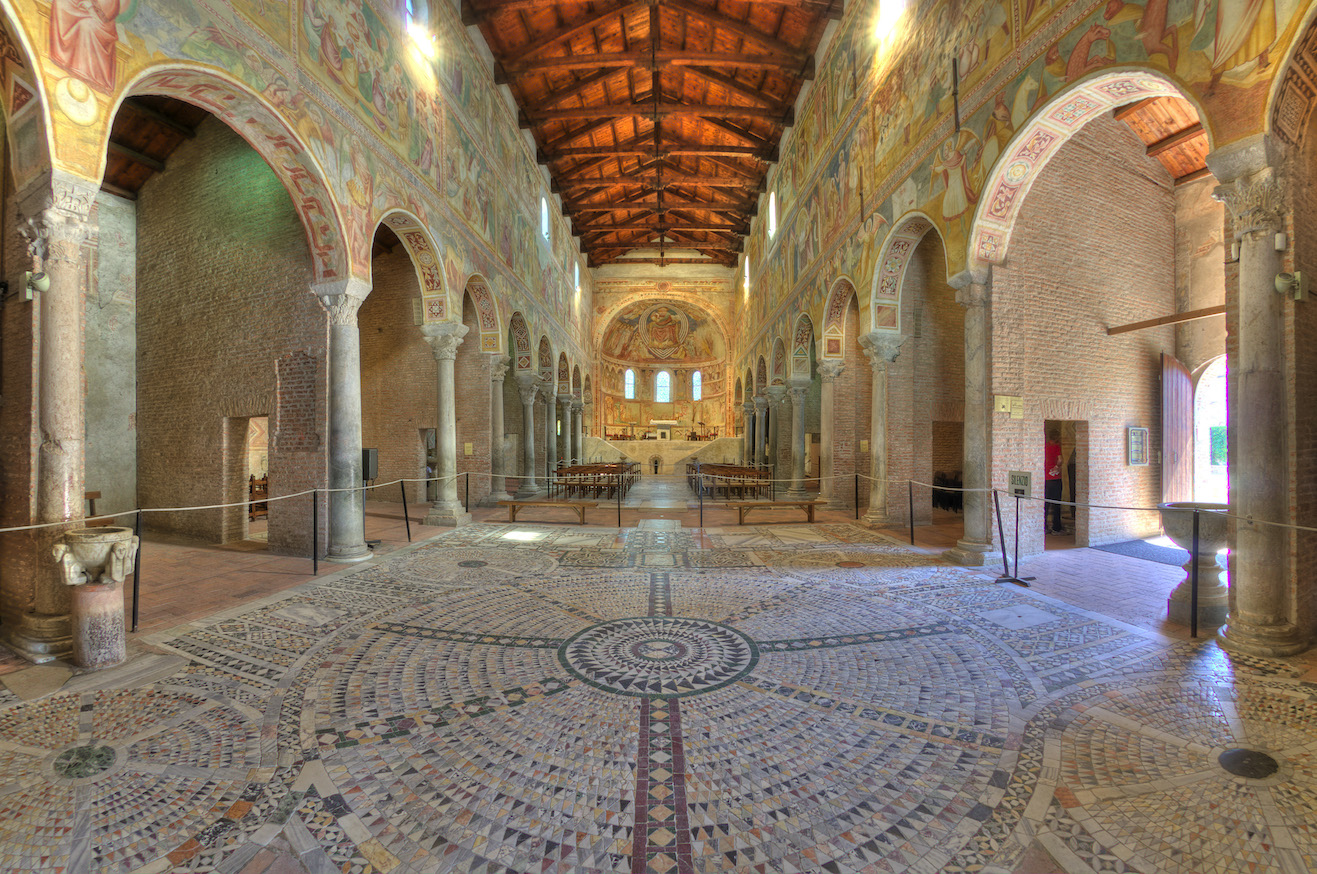
Piccola Cassia Way
Stages in Emilia-Romagna: 9
Length in Emilia-Romagna: 113 Km
The Piccola Cassia Way is an ancient road of Roman origin, northwards of the most famous Via Cassia, crossing the mountains between Modena and Bologna. Its origins date back to the times of Roman conquest and expansion in the Po Valley with the consequent foundation of new colonies and the reorganization of the existing road system.
The itinerary of the Piccola Cassia Way, which is still unchanged, originates from the south gate of the city of Modena and continues along the ridge between the Panaro valley and the Samoggia valley in the direction of the villages of Zocca and Castel d’Aiano, where it enters the Reno Valley.
After the Apennines, the route descends into Tuscany and finally reaches Pistoia, where it joins the Via Cassia in the direction of Rome.
Route Planner
The Way of the Gods
Stages in Emilia-Romagna: 3
Length in Emilia-Romagna: 67 Km
Traced originally around the VII-IV century A.C., the Way of the Gods owes its definitive layout to the work of Roman engineering.
With the fall of the Roman Empire, the road lost part of the original paving, and was reduced to a small path. With the advent of modern roads, it definitively lost its function; then, thanks to the work of a group of passionate hikers, the ancient route was rediscovered in the 80s. This road owes its name to the mountains that rise along its path, such as Adone Mount, Venus Mount, and Juno Mount.
Today the Way of the Gods is an extraordinary, well-equipped path that winds through the most evocative landscapes of the Tuscan-Emilian Apennines, connecting the cities of Bologna and Florence.
The Way of the Gods is usually accessible to non-experts as well.
Route Planner
St. Anthony's Walk
Stages in Emilia-Romagna: 15
Length in Emilia-Romagna: 258 Km
St. Anthony’s Walk unwinds between Veneto, Emilia Romagna, and Tuscany along the routes that at the beginning of the XII century were travelled by one of the most loved and venerated saints of all of Christendom, St. Anthony.
Starting from Camposampiero in the province of Padova, the itinerary makes its way southward for over 400 km, entering Emilia-Romagna through the ford on the Po River in Ferrara and reaching the Sanctuary of San Luca in Bologna.
The route then passes through some small villages such as Dozza – the “painted village” and the headquarters of the Regional Enoteca – before entering the Casentino Park, which was declared a Unesco Natural reserve.
The path then leads to the Hermitage of Montepaolo, an important Antonian shrine in Emilia Romagna and the first Italian residence – 1221 and 1222 – of Saint Anthony, who lived here after meeting Saint Francis in Assisi.
Route Planner
Romea Germanica Way
Stages in Emilia-Romagna: 18
Length in Emilia-Romagna: 260 Km
The Romea Germanica Way was created in the 13th century and it retraced the route that monk Albert of Stade travelled in 1236 to reach the city of Rome. It was one of the Peregrinationes Majiores by which pilgrims, kings and emperors from northern Europe crossed the continent to reach the Holy City.
The route starts from Ausburg, where the 1517 schism originated, passing through Trento, the city of the Counter-Reformation, and Padua; it finally enters Emilia Romagna at the height of Ferrara and arrives in the Byzantine city of Ravenna.
Once it reaches the Apennine mountains, the route goes up to Bagno di Romagna and the Serra pass, from which it then descends towards Tuscany ending its path in Rome.
Route Planner
Dante’s Walk
Stages in Emilia-Romagna: 13
Length in Emilia-Romagna: 194 Km
Dante’s Walk is a circular route between the Romagna area and the Casentino that retraces the steps of Dante Alighieri during his exile at the beginning of the XII century between the cities of Ravenna and Florence. The path is immersed in nature and it runs along ancient “crest” paths of Etruscan-Roman origin, away from traffic and busy streets.
The Route has its starting point at Dante’s tomb in Ravenna and finishes at the Museo Casa di Dante in Florence, crossing along its path the places of Dante’s exile, mentioned by the poet in many passages of the Divine Comedy.
Route Planner
Assisi Way
Stages in Emilia-Romagna: 4
Length in Emilia-Romagna: 72 Km
The Assisi Way is the result of the conjuction of many small pilgrimage routes dating back centuries, now united in a single great route that focuses on the figures of St. Anthony and St. Francis. The route winds its way from Dovadola to Assisi and represents an authentic immersion in the historical and naturalistic dimension of the Romagna Apennines.
The whole Assisi Way was conceived on the basis of symbolic places linked to the essence of pilgrimage itself and to the two saints Anthony and Francis. The route passes through well-known places such as Assisi, La Verna (the sacred mountain of the stigmata), Gubbio, Montecasale and other Franciscan centres of religious importance such as the hermitage of Casella, and the thousand-year-old hermitage of Camaldoli, founded by St. Romuald of Ravenna.
Along the way, the path gives access to the Parco delle Foreste Casentinesi, now a Unesco World Heritage Site. The way then crosses the Casentino Park, today a UNESCO World Heritage Site.
Route Planner

Saint Vicinius Way
Stages in Emilia-Romagna: 12
Length in Emilia-Romagna: 210 Km
The San Vicinius Way is one of the oldest historical Italian roads and it develops on a circular route that stretches for almost 350 kilometers between the provinces of Forlì, Cesena, Arezzo, and Rimini, overlapping the ancient Roman road system.
The route is inspired by the ancient Rome-Arezzo-Ravenna axis and passes through some of the most important natural environments in central-northern Italy, such as the Parco delle Foreste Casentinesi. It also allows you to visit some of the great centres of Christian spirituality, such as the Madonna del Monte in Cesena, the Basilica of San Vicinio in Sarsina, the Sanctuary of La Verna, the “Volto Santo” in Borgo San Sepolcro in Tuscany and the cultural and spiritual centre of the Hermitage of Camaldoli.
Route Planner
Saint Francis’s walk from Rimini to La Verna
Stages in Emilia-Romagna: 5
Length in Emilia-Romagna: 98 Km
Inaugurated in 2013, St. Francis’s walk from Rimini to La Verna retraces some of the places visited by the Saint on his journey through Valmarecchia in 1213. The path is dotted with convents and sacred settlements, such as that of the Poor Clares and the Friars Minor in Sant’Agata Feltria and the convent of Sant’Igne, built-in 1244 in the woods at the foot of the cliff of San Leo. Like many routes in this area, the St. Francis walk retraces the ancient Italian road systems and joins up at La Verna with the articulated paths of Central Italy to finally reach Rome.
In Emilia-Romagna, the Way crosses the beautiful Marecchia valley in the provinces of Rimini and Forlì-Cesena.
Route Planner
Viae Misericordiae
Stages in Emilia-Romagna: 12
Length in Emilia-Romagna: 225 Km
From the Pomposa Abbey (Adriatic coast) to the Hermitage of Gamogna (Apennines of Tuscany-Romagna), this circular route passes through the art cities of Comacchio, Faenza and Bagnacavallo and travels across lands rich in faith, culture, art, natural and fluvial parks, as well as a welcoming community and food and wine specialties.
Route Planner
Wool and Silk Road
Stages in Emilia-Romagna: 4
Length in Emilia-Romagna: 69 Km
This route connects Bologna and Prato, two cities rich in history that have thrived over the centuries thanks to their river harnessing works. With its sluice on the River Reno and its canals, Bologna was known for centuries as the capital of silk, while Prato was known as the city of the ancient dam, of the canals and mills of Cavalciotto, as well as for its tradition of wool processing.
This charming itinerary can be travelled all year round, but we recommend you to be extra careful during the winter months.
Route Planner
Alta Via - The Great Parks Trail
Stages in Emilia-Romagna: 27
Length in Emilia-Romagna: 493 Km
This route is a long multi-day itinerary that runs along the suggestive mountain ridge that divides the regions of Liguria, Tuscany, Emilia-Romagna, and Marche.
It comprises 27 high-altitude stages and takes you across two National parks, five regional parks and one interregional park in territories with great environmental, natural and cultural value.
The best time of the year to walk the entire path is from the month of June to October, but the stretch within the Vena del Gesso Romagnola regional park and the Foreste Casentinesi National Park can be walked during the rest of the year as well.
Route Planner
![]()
Along the ridge between Tuscany and Emilia-Romagna: Cupolino Mount, Schaffaiolo Lake, Ancisa Pass, Ph. Matteo-Gualmini
The Romea Germanica Imperial Route
Stages in Emilia-Romagna: 8
Length in Emilia-Romagna: 160 Km
The Romea Germanica Imperial Route is a path that connects the city of Trento with the city of Arezzo passing through Modena, and it is part of the ancient system of Germanic streets leading to Rome.
In the past, it was a very popular road for military, religious and commercial needs as it connected the Alpine passes, the passes of the Apennines and the south of the Italian peninsula.
The north-south road network on which it runs has always been an important communication route between Europe and the Mediterranean and has been used in both directions since the time of the Celts, the Etruscans and then the Romans. It was precisely from this route that the Lombards, Franks and Germans arrived in Italy in the Middle Ages.
From the 18th century onwards, it became the most important route between Italy and Europe, thanks partly to the construction of the Abetone-Brenner motorway, which essentially follows the same route.
Today the itinerary allows to cross an extremely varied landscape, walking through the alpine valleys, the mountains of the Tuscan-Emilian Apennines and along the waterways, once used more of the roads for every type of movement (such as the ‘Adige, the Arno the Secchia and the Scoltenna) and on whose banks the Lombards definitively defeated the Byzantines.
Today this route allows you to cross an extremely varied landscape that stretches from the Alpine valleys to the mountains of the Tuscan-Emilian Apennines, making it possible to visit the city of Modena together with the small mountain villages of the Apennines, privileged places of production of many regional PDOs and PGIs.
Route Planner
Author

Walter Manni
Explorer and Adventurer: loves sailing the oceans, climbing the highest mountains and surfing on the waves of the web
You may also like
Private: 5 itineraries to enjoy the nature in Emilia Romagna
by Arturo Castellini /// December 1, 2016
Monasteries and Spiritual walks in Emilia-Romagna
by Davide Marino /// May 3, 2019
Emilia Romagna Slow | The Way of the Gods
by Walter Manni /// March 27, 2017

Interested in our newsletter?
Every first of the month, an email (in Italian) with selected contents and upcoming events.
Emilia Romagna Slow | The Francigena Way
by Walter Manni /// May 2, 2017

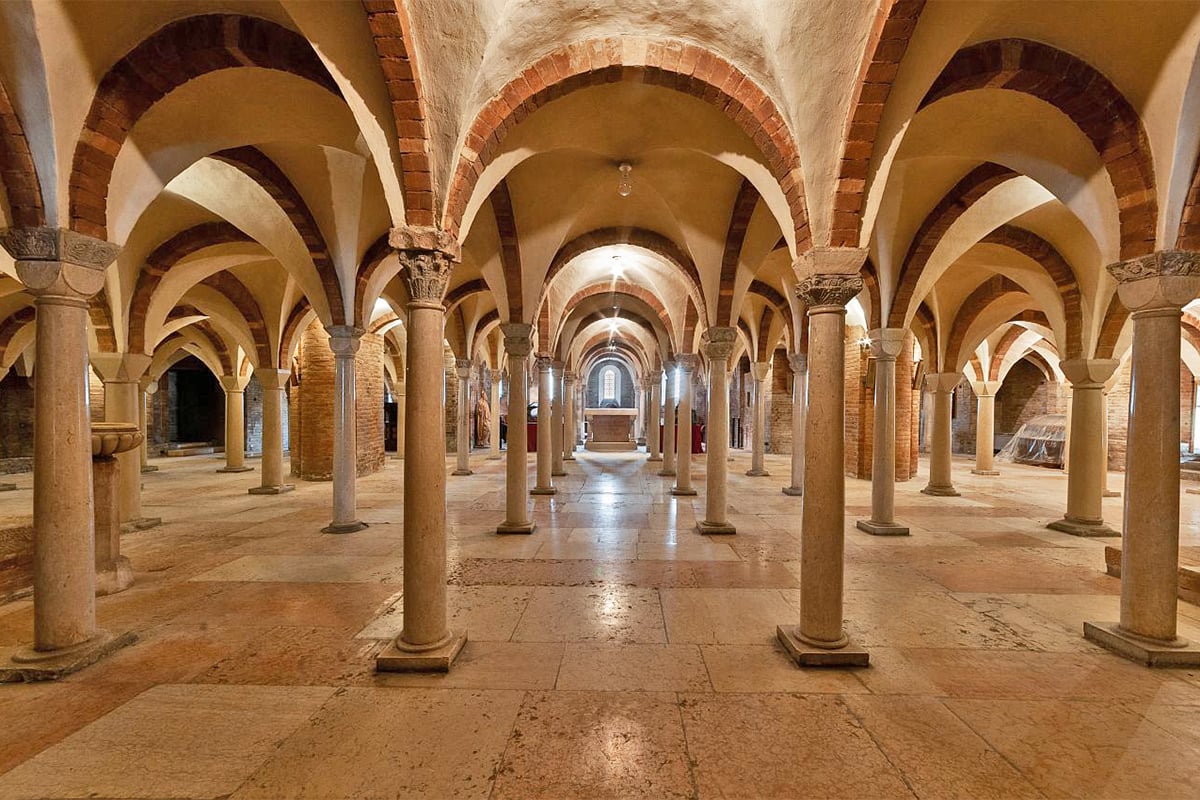

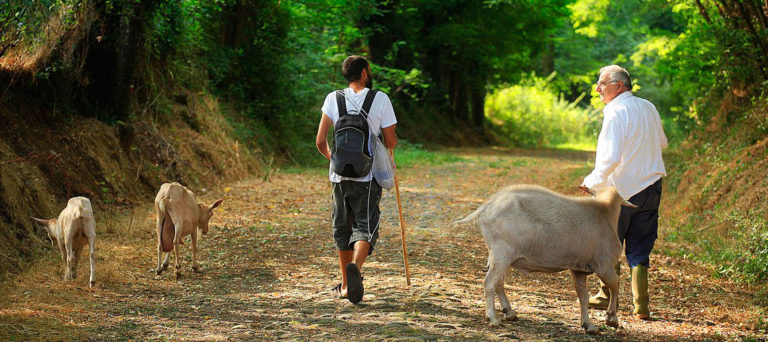

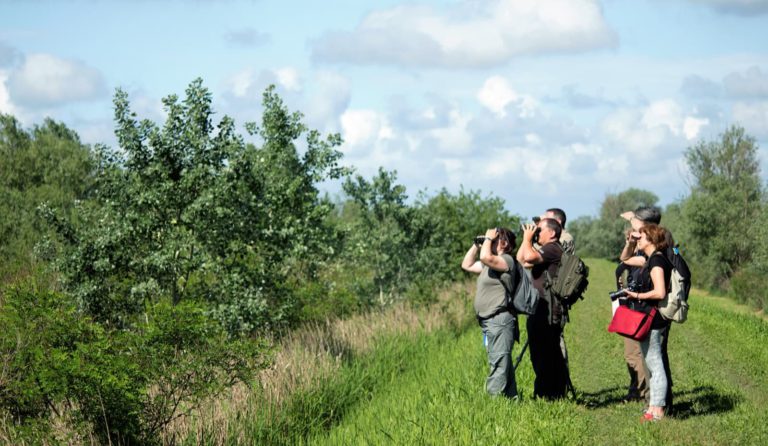
Mario Pampanin
Leggo, nella sintetica presentazione della Via Francigena, che “In the Emilia Romagna stretch, the Francigena Way crosses some historic villages of great historical and spiritual value such as Bobbio and Berceto.
The village of Bobbio, during the Middle Ages, was a place of extreme spiritual value; here, in fact, stood the Abbey of San Colombano, founded in 614 by the Irish monk Columbanus, which was one of the safe places that met along the road that led to Rome”.
L’indicazione relativa a Bobbio andrebbe però collocata nella presentazione della Via degli Abati (The Abbots Way).
Grazie per la cortese attenzione.
Walter Manni
Ciao Mario,
innazitutto grazie per averci scritto.
Avevamo inserito l’abitato di Bobbio come possibile borgo storico da visitale lungo il percorso, ma effettivamente potrebbe semrbare fuorviante.
Abbiamo quindi corretto il testo secondo delle indicaizoni geografiche più precise, cose che riporteremo anche nella versione italiana.
Grazie ancora dell’utile appunto
Walter, Staff In Emilia Romagna
Keith Wakefield
I’m fascinated by the philosophy and faith behind pilgrimage walks which in today’s sceptical world is a remarkable tribute to the faith tradition . I have walked to Assisi along one of the routes after being based in Gubbio , however , I would like reference to walks from Bologna so I can explore other pilgrimage routes ,. Can you help with the guides , maps and books I need for 2022 .